Today was finally warm and dry enough to shoot this Highlander. Last night I masked off all the panel edges with 3M automotive masking tape.
NOTE: If you try to use cheap white masking tape, then the solvents in modern 2 stage paints will ruin your paint job and bleed right underneath it. I then taped all the exposed panels with newspaper, and on top of the newspaper sheets I put 3mil. plastic sheeting. Can't stress enough that the plastic sheeting is a MUST when doing your own paint work.
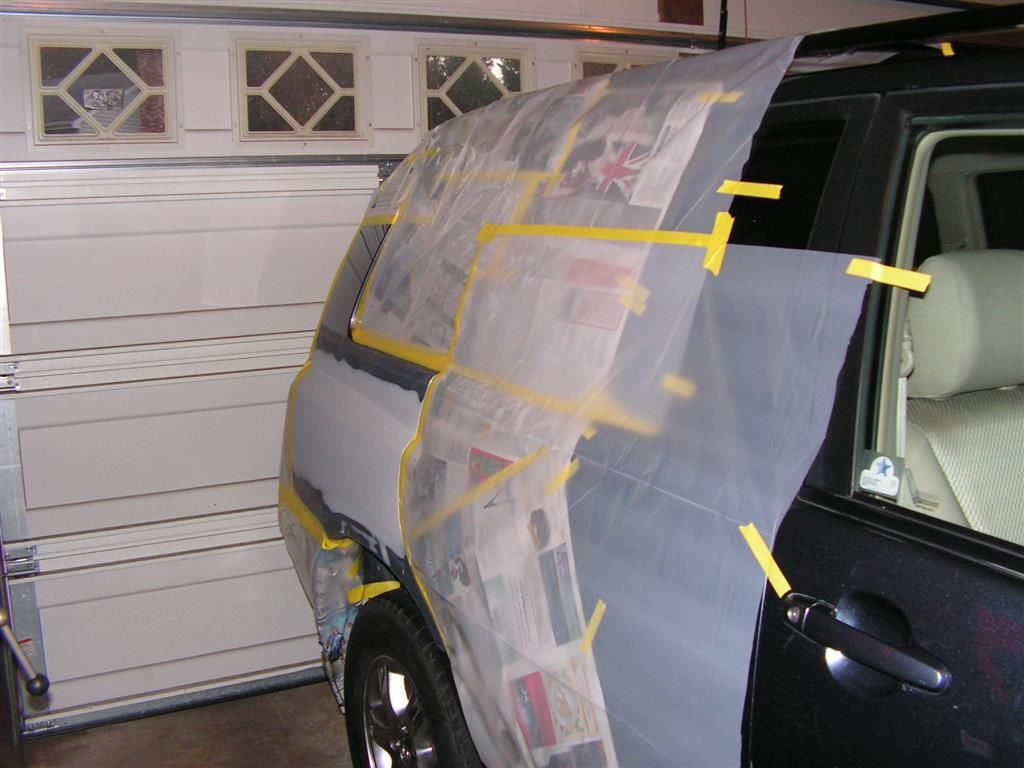
The blend lines are defined --

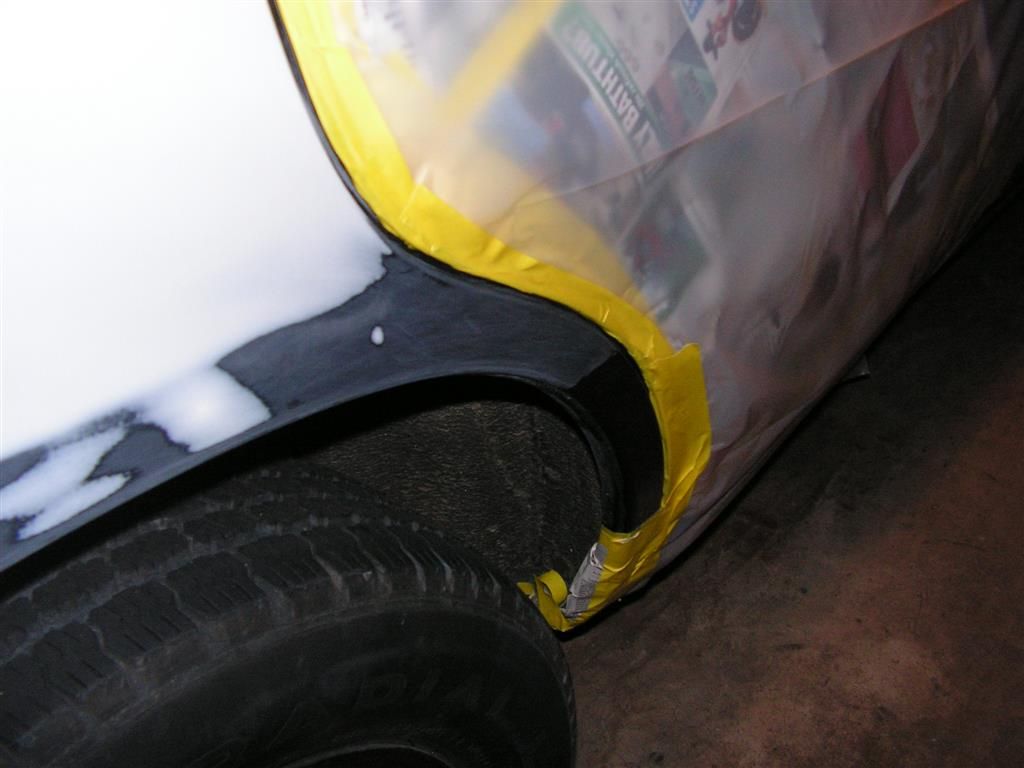
Then everything is nicely taped and secured.
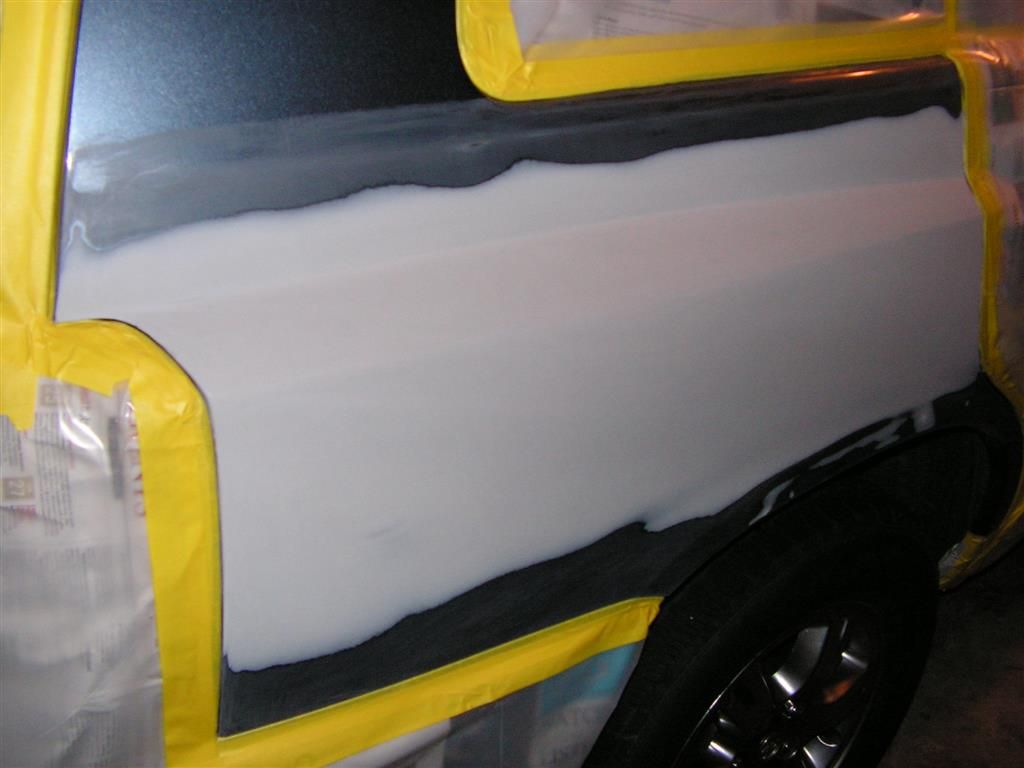
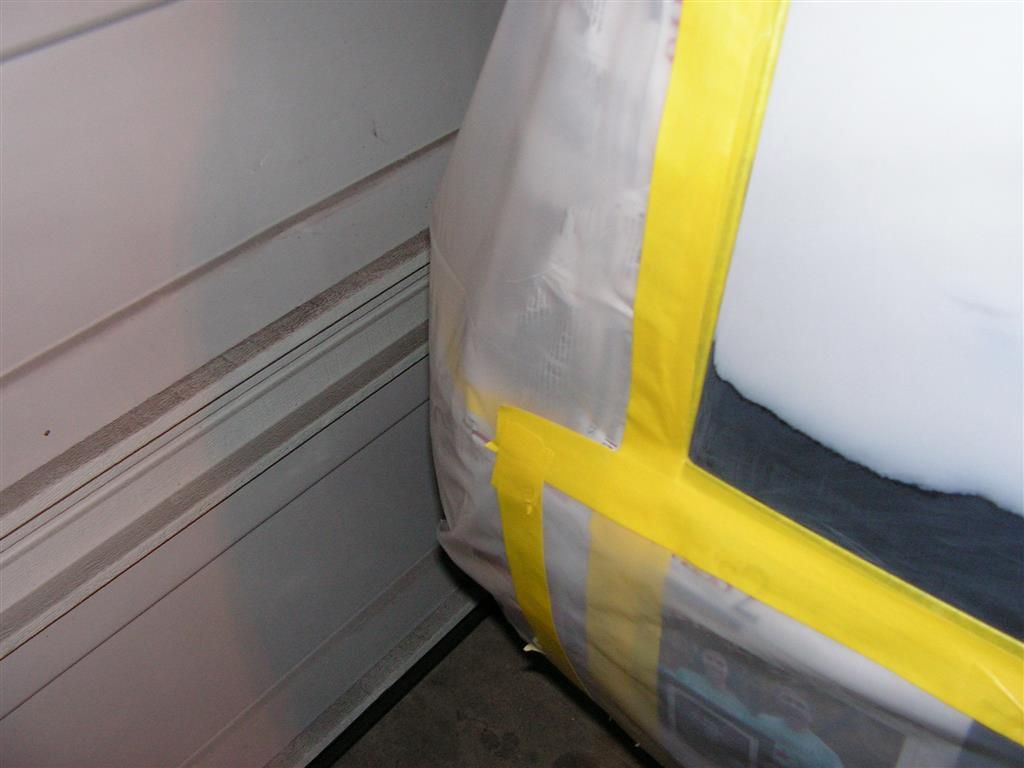
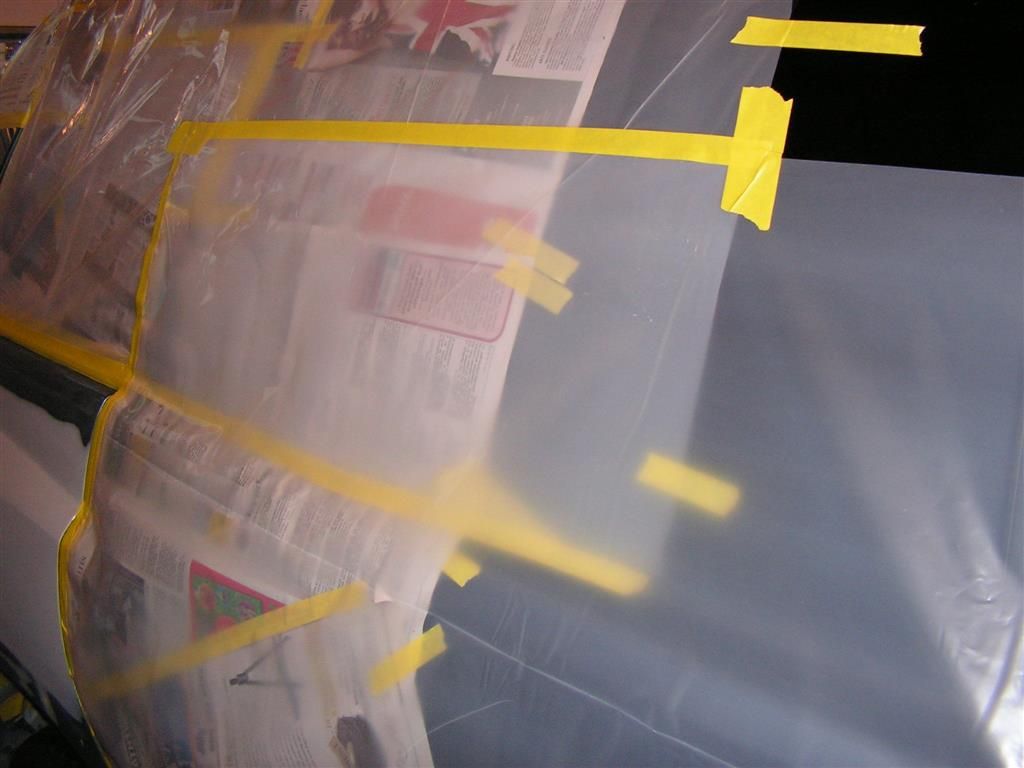
This morning is got all the materials together -- I'm using Sherwin Williams Ultra 7000 paint and ACME brand clear coat -- also from Sherwin Williams. I like Sherwin Williams paint because I believe that it blends better when doing final finish sanding with 2500 grit paper.
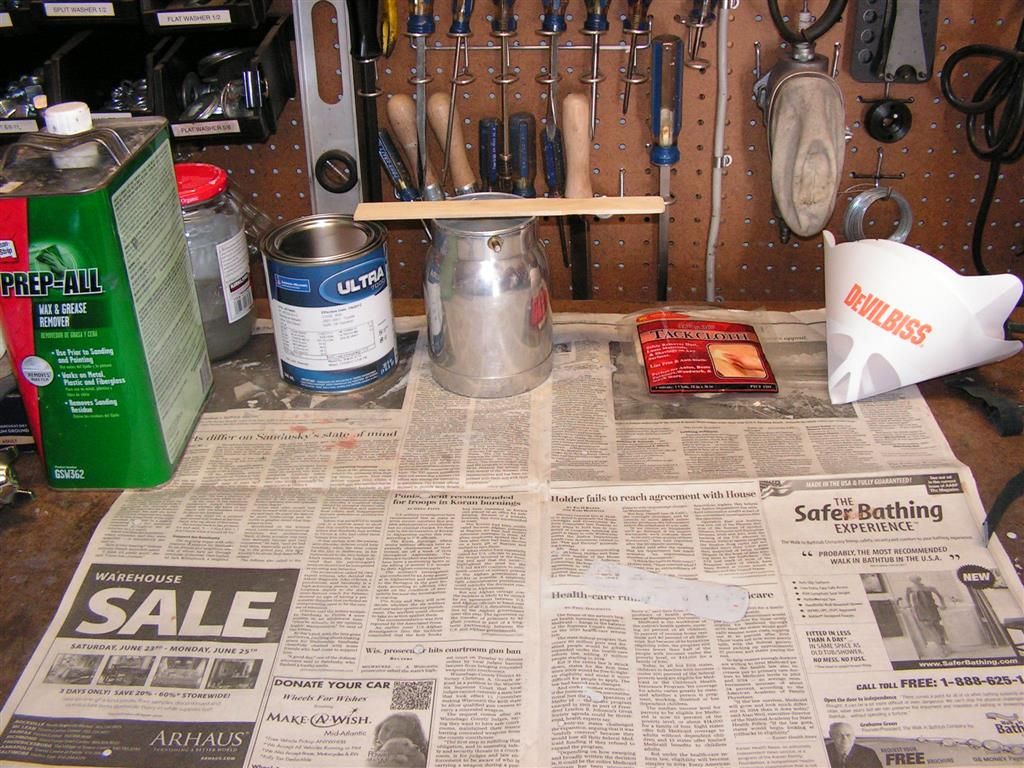
I built a mini-spray booth around the right side of the car using .7 mil plastic sheeting. This stuff is great, and it helps in containing airborne contaminants because when you peel the sheeting apart, the plastic sheets become statically charged and will attract huge amounts of dust and overspray. When i was finished with the spraying, the plastic sheets had captured an enormous amount of dirt that could otherwise have ended up in my paint.
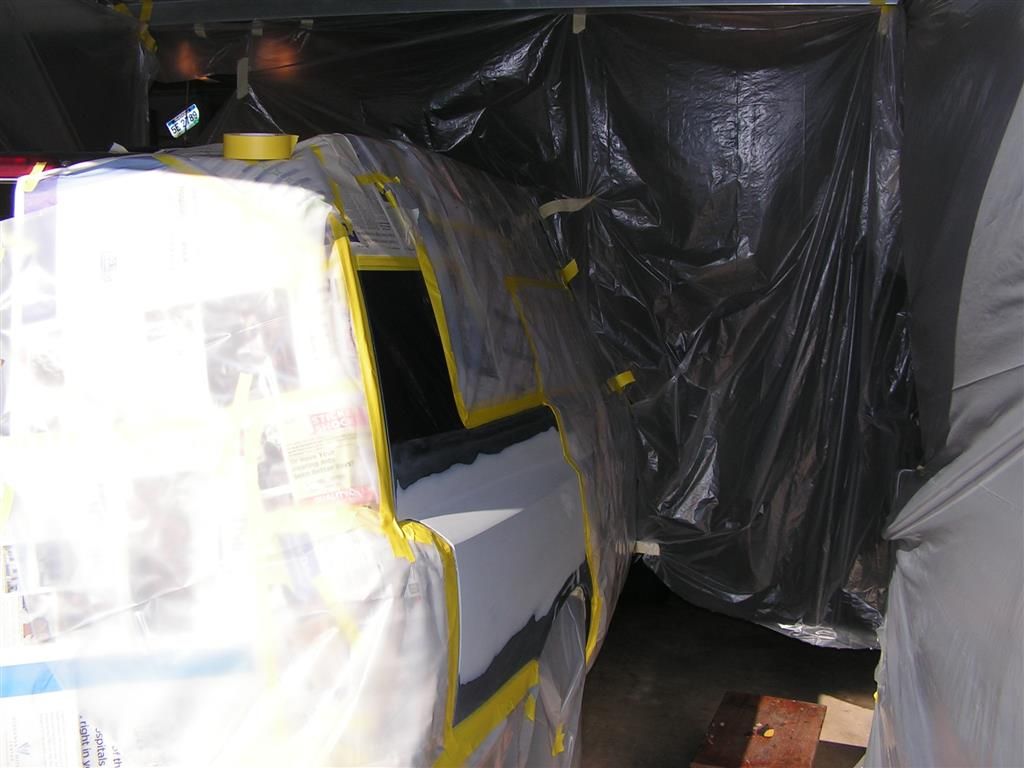
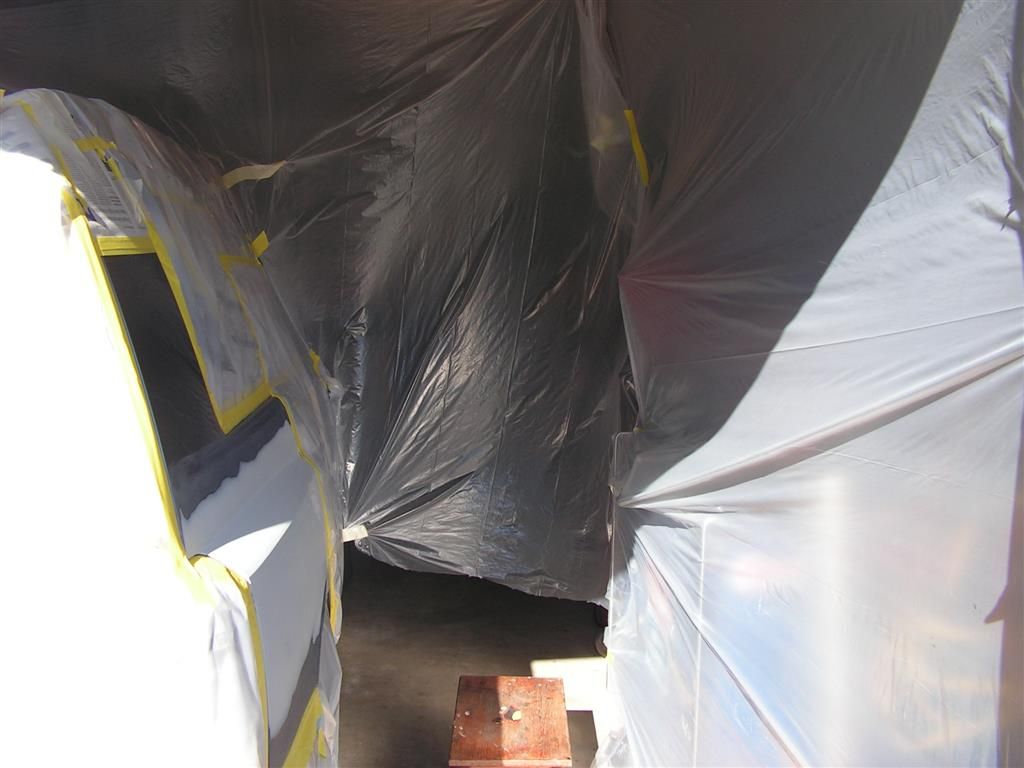
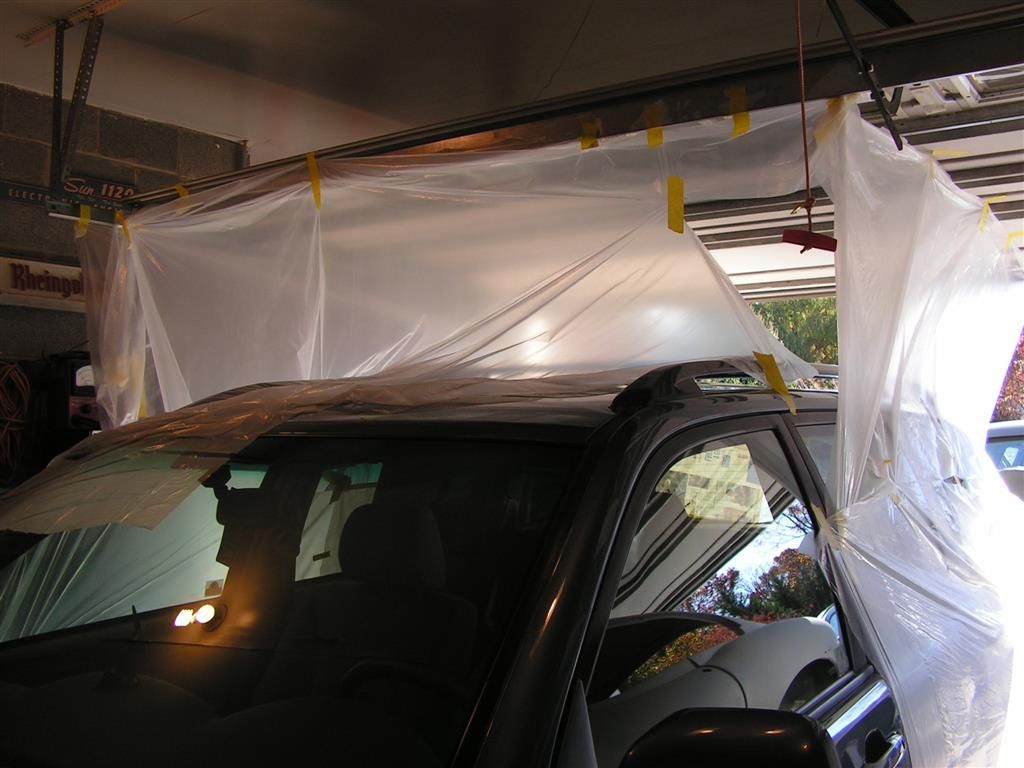
Finally I wiped everything down with degreaser and used a tack rag to get the last residue. Then I shot a first tack coat that was just wet enough to cover the light colored primer. Then comes the hard part -- WAITING! I waited 15 minutes between coats and that gave each coat plenty of time to dry in this weather.
The hardest part about painting is having the discipline to walk away and wait -- "shoot it, and resists the temptation to f#%k with it" is the recipe for a good finish.
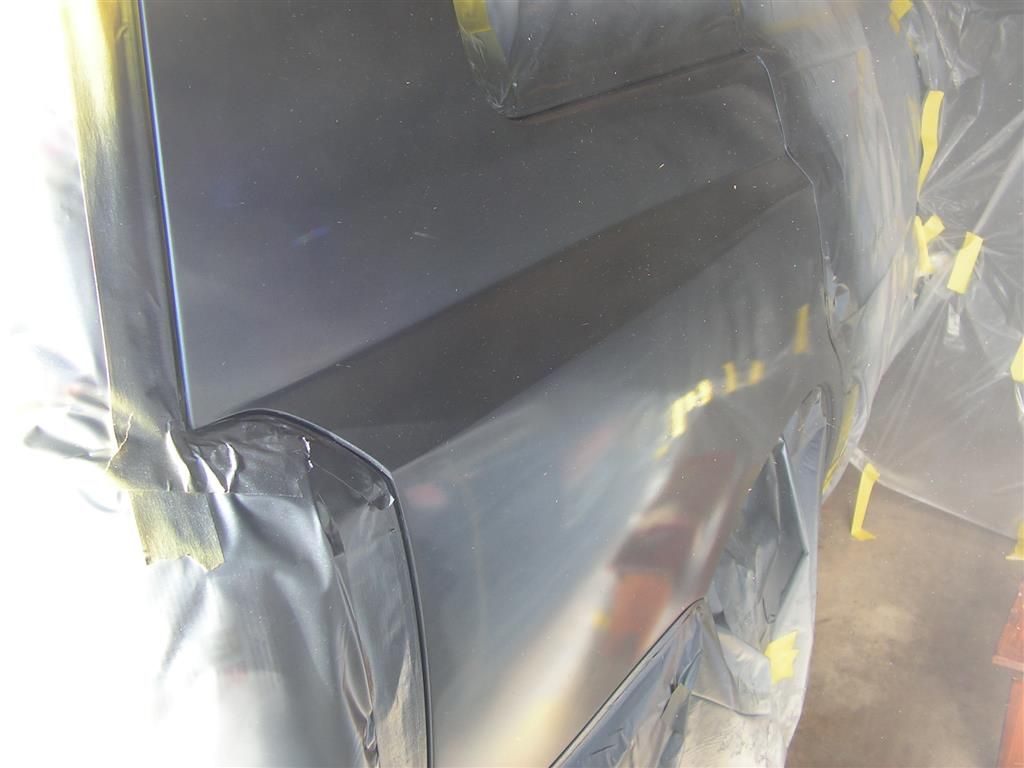
I shot a total of five coats -- the last being the most wet.
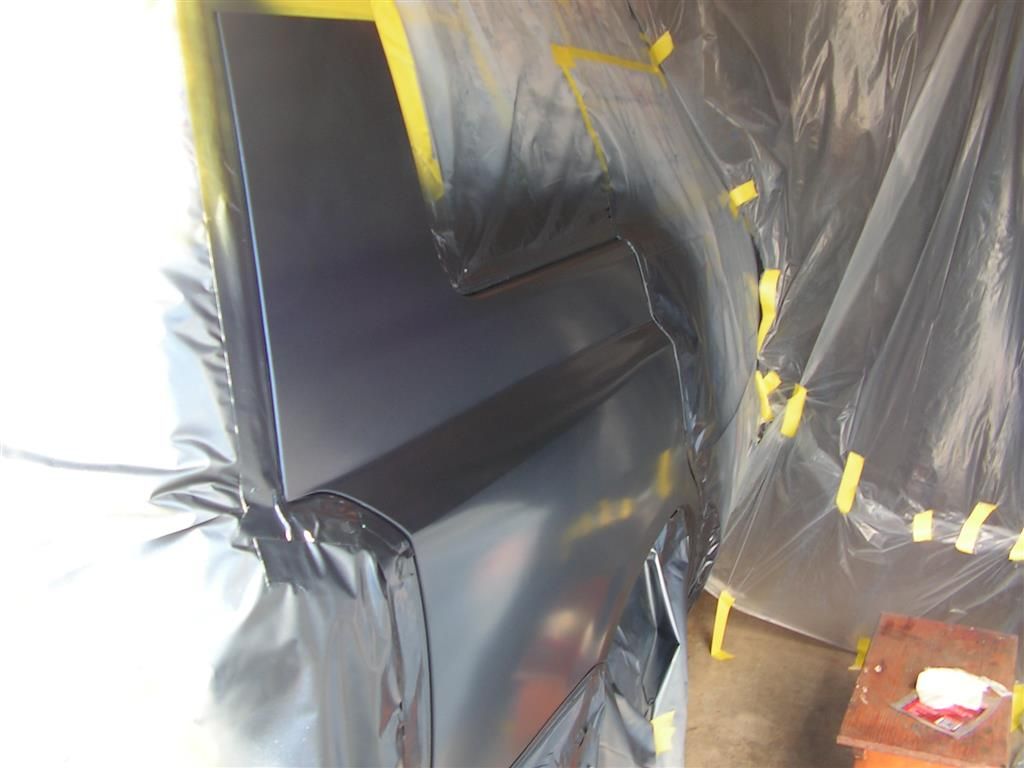
After the final color coat, I waited 30 minutes and started on three coats of clear-- all were shot wet.
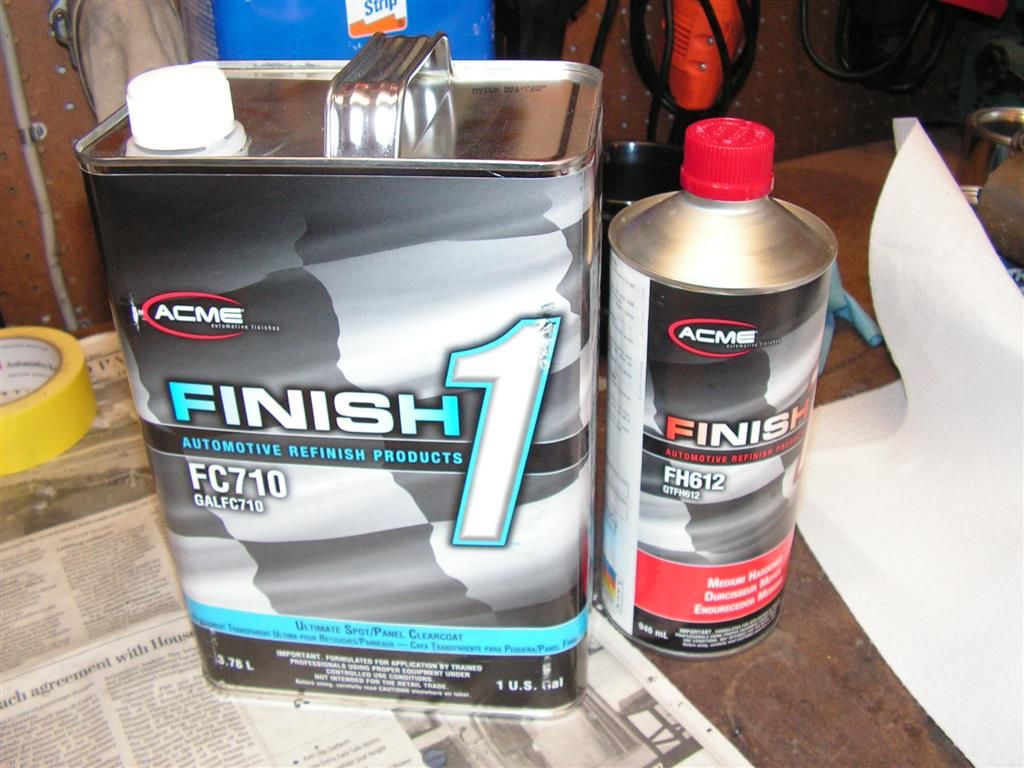
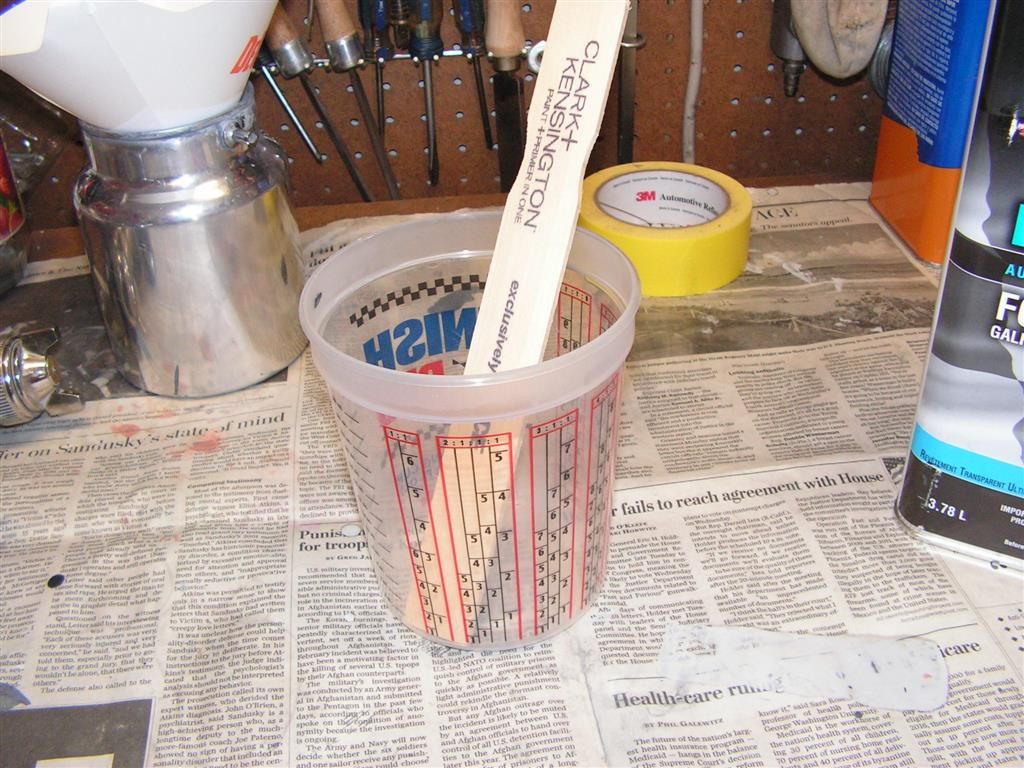

Here's the last of the three coats -- now it's time to blend the top and bottom areas. To do that I mix a small amount of mixed clear with 60-70% reducer. Then I spray the transition area with that mix -- one shot is enough to burn that coat into the existing clear coat. It's not perfect and will have to get sanded and polished, but this way, it takes a lot less effort to make it blend.
I'll have to wait a few days for this stuff to harden before I can sand it with 2500 grit and do the final polish.

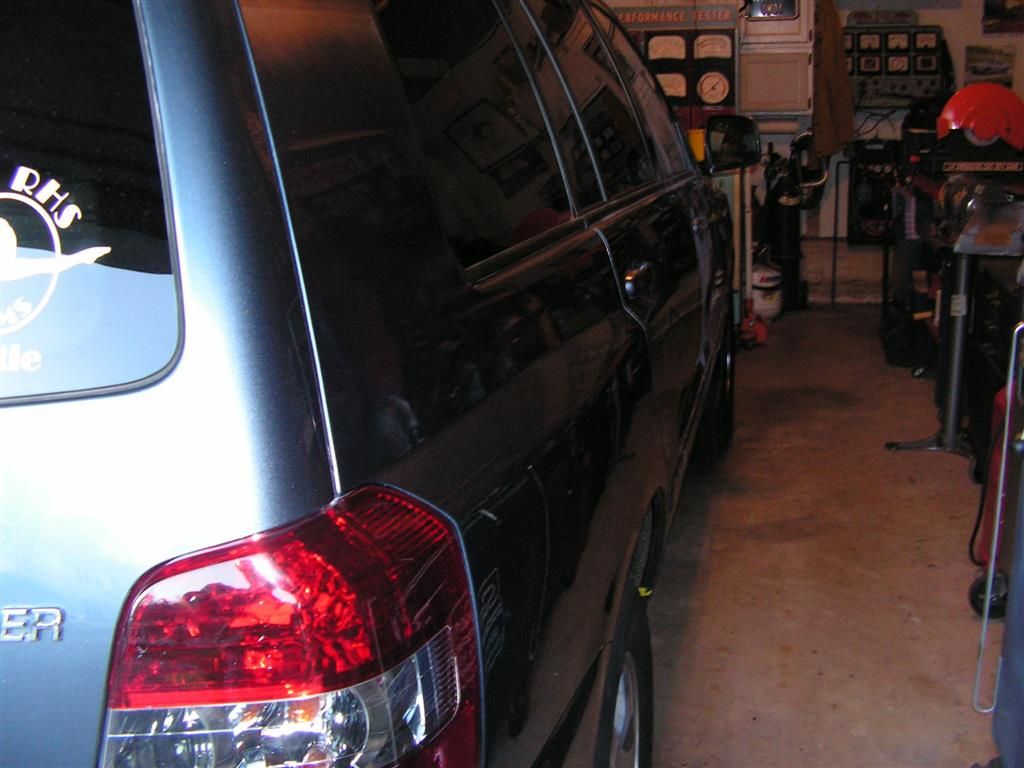
The blend area that was shot with the reduced clear ---
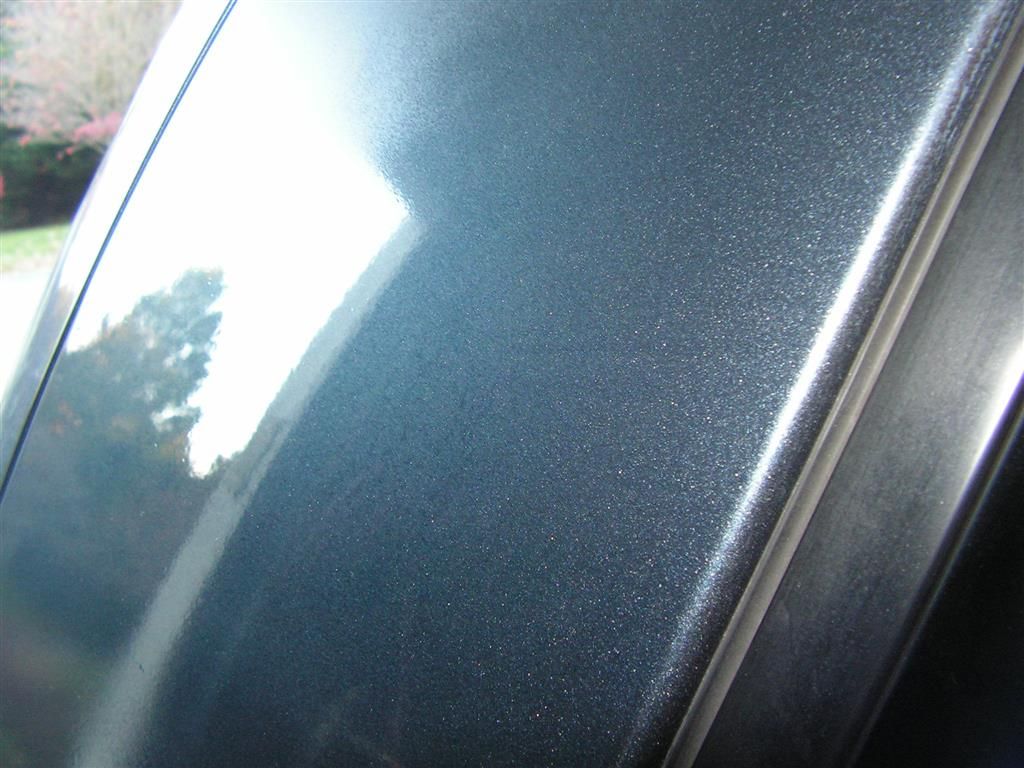
Done --- two weeks later and she's as good as new.
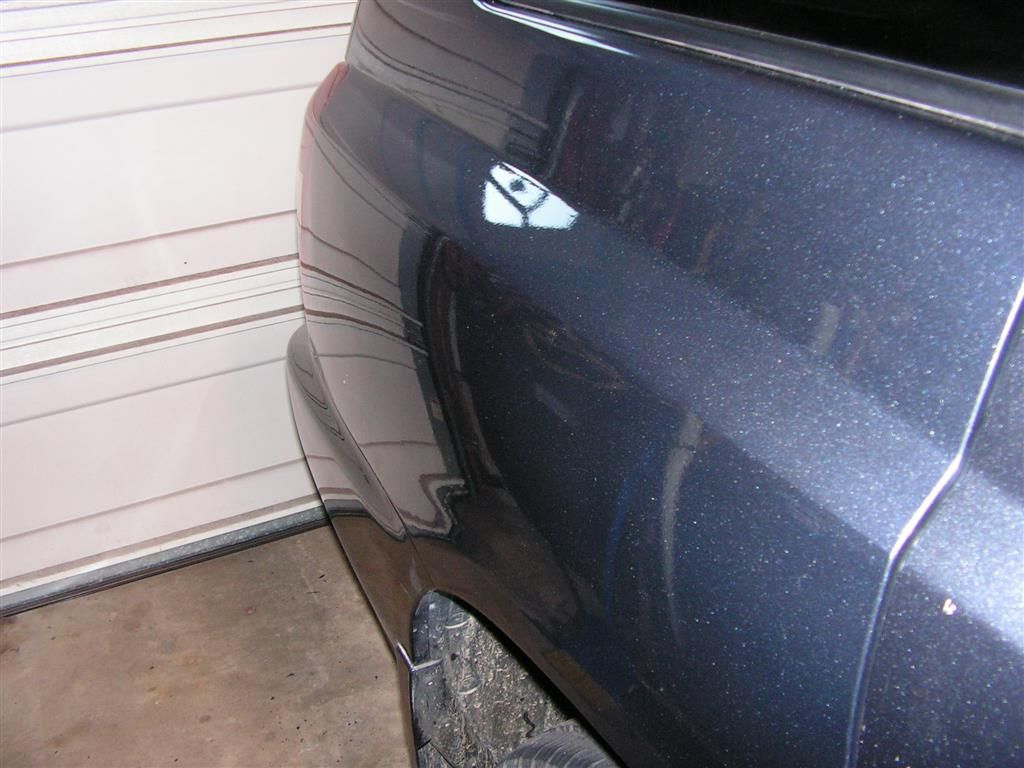
Now maybe I can get back to my own projects -- LOL